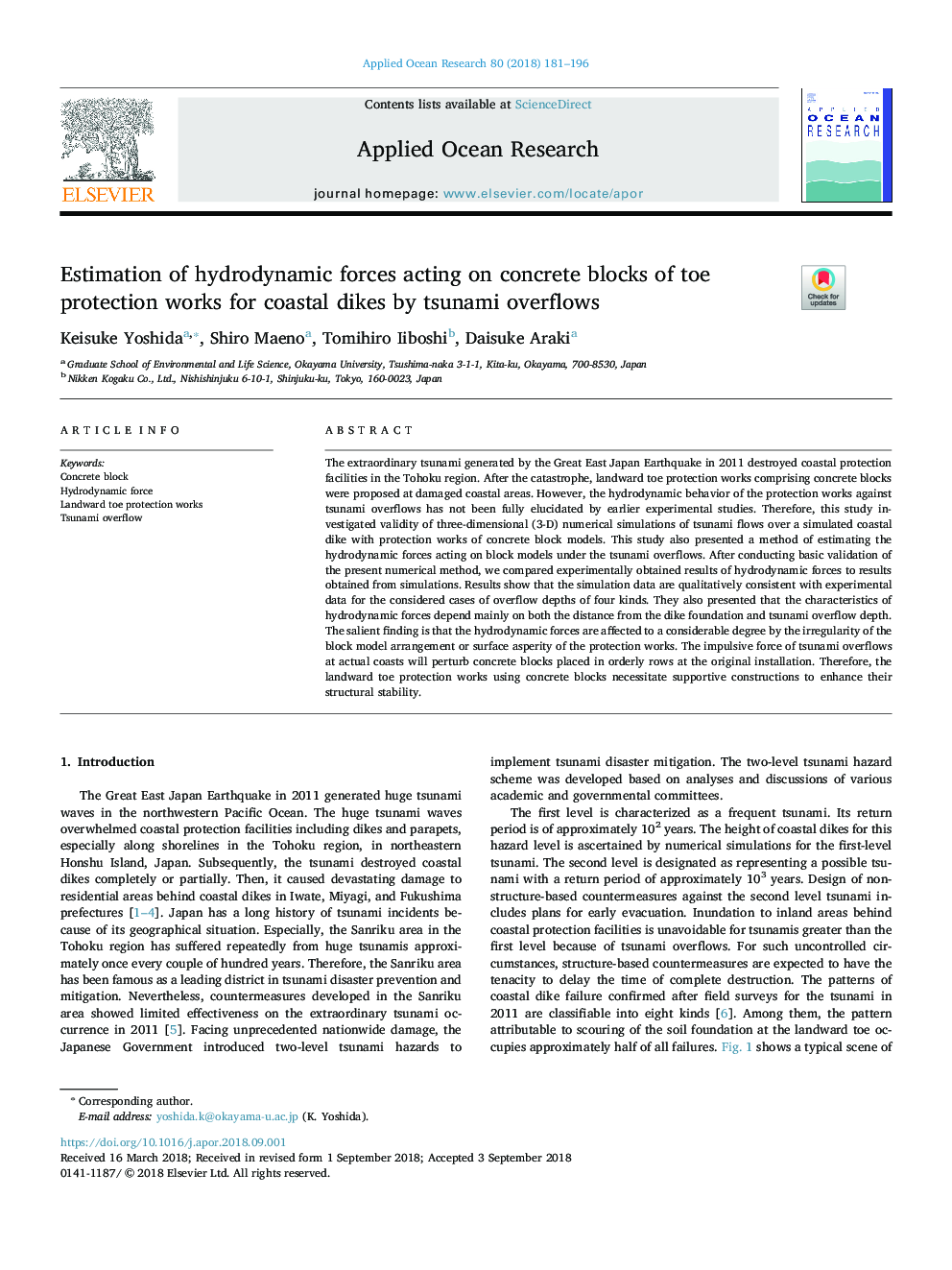| Article ID | Journal | Published Year | Pages | File Type |
|---|---|---|---|---|
| 10142550 | Applied Ocean Research | 2018 | 16 Pages |
Abstract
The extraordinary tsunami generated by the Great East Japan Earthquake in 2011 destroyed coastal protection facilities in the Tohoku region. After the catastrophe, landward toe protection works comprising concrete blocks were proposed at damaged coastal areas. However, the hydrodynamic behavior of the protection works against tsunami overflows has not been fully elucidated by earlier experimental studies. Therefore, this study investigated validity of three-dimensional (3-D) numerical simulations of tsunami flows over a simulated coastal dike with protection works of concrete block models. This study also presented a method of estimating the hydrodynamic forces acting on block models under the tsunami overflows. After conducting basic validation of the present numerical method, we compared experimentally obtained results of hydrodynamic forces to results obtained from simulations. Results show that the simulation data are qualitatively consistent with experimental data for the considered cases of overflow depths of four kinds. They also presented that the characteristics of hydrodynamic forces depend mainly on both the distance from the dike foundation and tsunami overflow depth. The salient finding is that the hydrodynamic forces are affected to a considerable degree by the irregularity of the block model arrangement or surface asperity of the protection works. The impulsive force of tsunami overflows at actual coasts will perturb concrete blocks placed in orderly rows at the original installation. Therefore, the landward toe protection works using concrete blocks necessitate supportive constructions to enhance their structural stability.
Keywords
Related Topics
Physical Sciences and Engineering
Engineering
Ocean Engineering
Authors
Keisuke Yoshida, Shiro Maeno, Tomihiro Iiboshi, Daisuke Araki,
